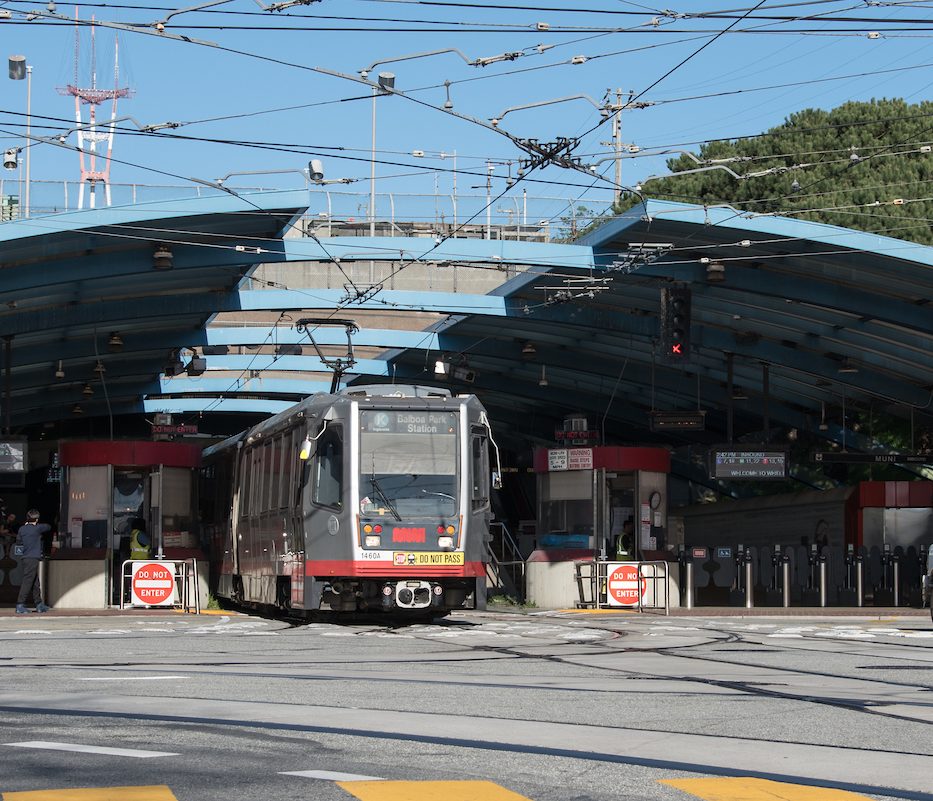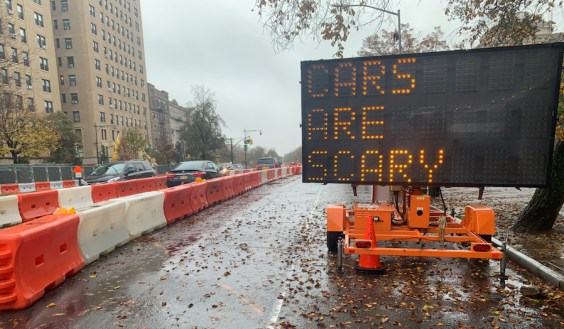Note: GJEL Accident Attorneys regularly sponsors coverage on Streetsblog San Francisco and Streetsblog California. Unless noted in the story, GJEL Accident Attorneys is not consulted for the content or editorial direction of the sponsored content.
The transit industry is at a crossroads. Although urban travel has recovered in most regions, transit ridership has not fully recovered. That coupled with driver shortages and the end of federal recovery funding, there are calls to “right size” (i.e reduce service). I would argue, as have others, that this is the absolute wrong approach. Throughout my career in transit I found that there is a direct correlation between the per capita revenue service hours provided by a transit agency (or collection of agencies) and per capita ridership.
At the beginning of Covid there were discussions that growing ridership shouldn’t be the primary focus of measuring the value of transit. More on that below. However the importance of transit ridership shouldn’t be discounted. Good transit service can provide a multitude of benefits to the community – economic, environmental, and social; but only when, to use a technical term, there are butts in seats. Empty buses, trains and ferries provide little benefit to the community.
When I took on my first job as a transit general manager I wanted to understand where I should focus my attention to increase ridership. I identified 10 peer agencies and sent out a questionnaire seeking information on 15 different measures. What struck me was the only correlation I could make between inputs and outputs was between per capita service hours and per capita ridership. Each of the three agencies I have managed have been distinctively different (an exurban start up, a legacy system in an old industrial city, and a progressive college town system) yet when I identified at least ten comparable peers for each system, the same correlation existed.
Which brings me to the research I was asked to perform for Seamless Bay Area and Voices for Public Transportation. The Bay Area is second to only the New York metropolitan area in terms of both per capita service hours and per capita ridership. However, both the core City of New York has a significantly higher population density than San Francisco (27,000 persons per square mile (or 31,000 if Staten Island is excluded) compared to 17,000 for San Francisco) and the New York combined Statistical Area has higher density than the nine Bay Area counties.
One could conclude that the Bay Area is transit rich since it is number two in terms of per capita service and ridership compared to a much denser region. However, should the amount of transit service provided be graded on the curve? Just because the Bay Area may be more transit rich than other, and in some cases larger, urban areas does not mean that the optimum level of service is being provided to meet the region's mobility and accessibility needs or to provide the region with the full benefits a robust transit system can provide.
For my research (all based on pre Covid service levels and ridership) I examined Seattle (because of investment in increased service resulted in increased ridership), Washington DC (because like the Bay Area it is served by multiple transit providers) and Canada – both the six largest metropolitan areas as a whole and specifically Toronto because it is the one Canadian Metro area with multiple transit providers.
In each category of transit systems that I examined (the 27 Bay Area systems, a subset of the 27 – the 20 systems providing bus service, the seven Washington DC systems, the five Seattle area systems, the six Canadian metro regions and the 10 Toronto systems) there was a correlation between per capita service hours and per capita ridership. To drive home the point the result among the 20 Bay Area transit systems providing bus service is instructive. Of these systems the top five in per capita service hours are also the top five in per capita ridership. For those familiar with the Bay Area, guessing that Muni and AC Transit are one and two in both categories is not surprising. But the transit system with the third highest per capita service hours and fourth highest per capita ridership is WestCAT serving suburban western Contra Costa County. The geography of the WestCAT service area is as transit unfriendly as you will find anywhere, hilly low density residential subdivisions. WestCAT punches above its weight due to a robust express bus service connecting the service area with BART in El Cerrito and by also providing direct service to San Francisco. However this illustrates that by providing a high level of service that meets the unique needs of the community will generate high ridership.
I used two methodologies and seven alternatives to develop benchmarks for service levels. The first methodology focuses on per capita revenue hours. The second methodology develops a set of principles and standards to determine where existing transit service (pre-COVID) fails to meet that standard. All seven alternatives indicated a deficiency of service in the Bay Area.
Toronto provides a good benchmark for the Bay Area as an economically and socially diverse region with multiple transit providers. However, Toronto as a city is less dense than San Francisco (4,457 persons per sq. km. (psk) compared to 7,174 psk for San Francisco) and the Greater Toronto Region is also less dense than the Bay Area (278 psk compared to 536 psk). To bring Bay Area service levels to match Greater Toronto would require a 55% increase in service. It should be noted that Toronto does not have the highest per capita service levels or ridership in Canada – Montreal is tops in both categories and bringing Bay Area service levels to match Greater Montreal would require a service increase of 73%. Furthermore all six of the largest Canadian metro areas provide a greater level of service than the Bay Area and all six have plans for further growth. Furthermore as of February 2023 Vancouver has recovered 82% of its pre Covid ridership despite one the lowest return to office rates in North America and Edmonton has recovered 100% of pre Covid ridership.
Is adding service all it takes to grow transit ridership? No! The three legged stool analogy applies here – remove one leg of the stool and it falls over. Maximizing transit ridership requires designing a product that meets people’s needs (leg one); marketing or promoting the service so people are aware, understand and are enticed to use it (leg two); and provide a quality operation so that the customer’s experience is a positive one and they will continue using it once they sampled it (leg three). These three legs are supported by the external environment of density, demographics and urban form that determine market size, equity considerations and the ease in which individuals can access service. However as the correlations between per capita service and per capita ridership illustrate, if all of the other elements are supportive of high ridership – it won’t occur unless there is the frequency, service span and service design that make transit an attractive alternative. That will only occur if there is sufficient investment in transit operations.
But is maximizing ridership the right metric? David Zipper made a compelling case that access should be the prime metric. However, what is accessibility? A route providing a few trips per day is not good accessibility even though it’s a line on a map. Frequency and service span play an essential role in providing accessibility. In other words high service levels are essential for great accessibility.
The last few years have been disruptive, but just as overall transit ridership has experienced periods of growth as well as periods of decline (this isn’t the first time in my 40 plus year career that I’ve heard the call to right size), the underlying principle correlating service levels to ridership has not.
The bottom line is this. The Bay Area is underserved. If the Bay Area, which by US standards is transit rich, should increase transit service by at least 55%. To achieve this growth will only occur if there is sufficient investment in transit operations.
***
Ron Kilcoyne has 40 years of experience in the transit industry, serving as General Manager for three transit systems – Santa Clarita Transit, Greater Bridgeport Transit and Lane Transit District. He focuses on Advocacy and Policy work for Seamless Bay Area, and leads research to determine where transit service should be increased. He is also senior manager at Transportation Management and Design in Carlsbad, California.






